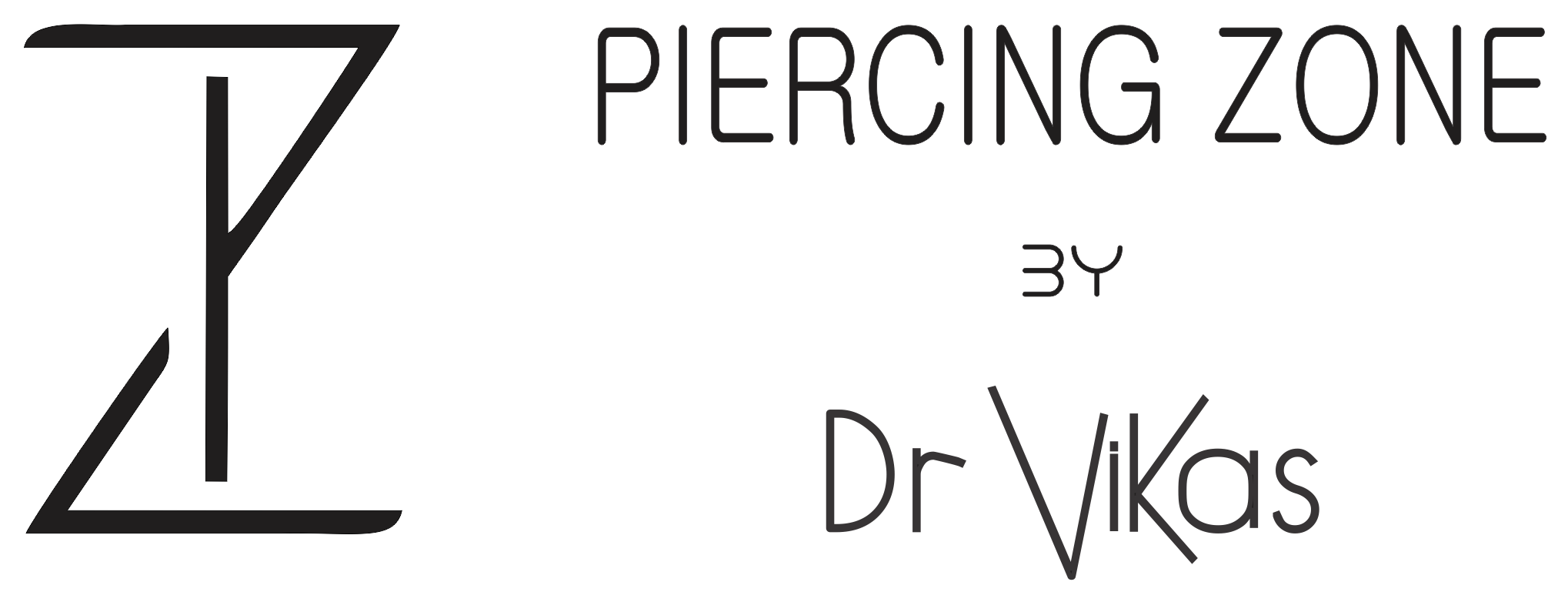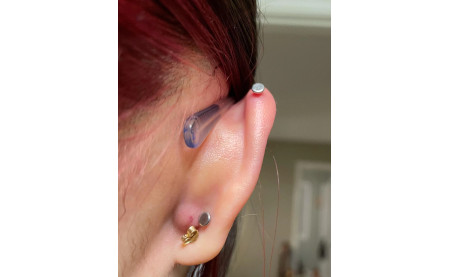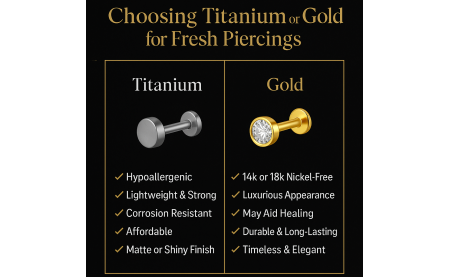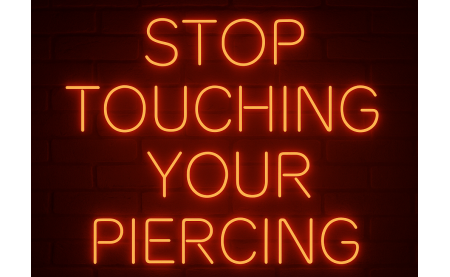Why Helix Piercing Is Not Healing
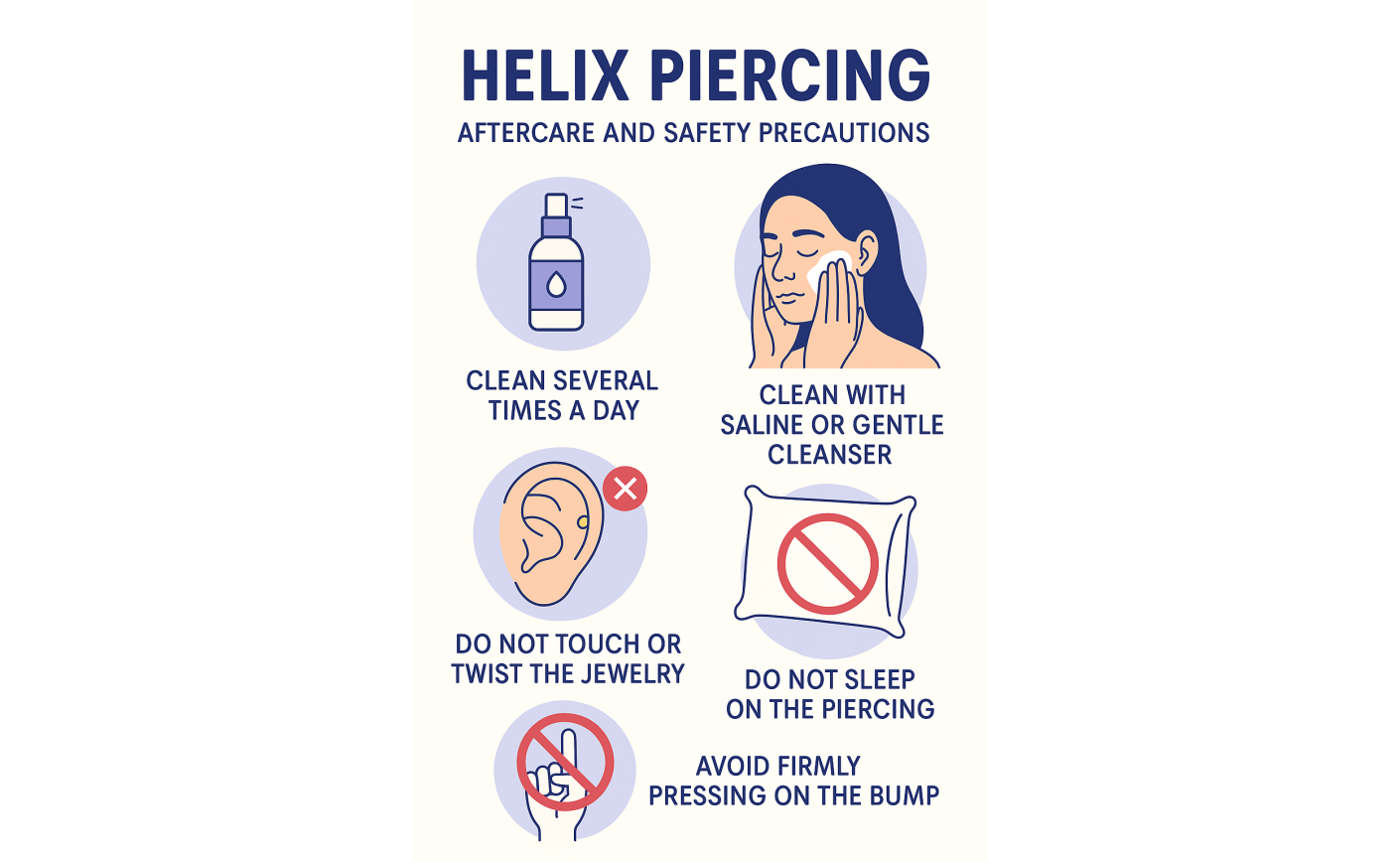
What is a Helix Piercing?
The helix piercing is one of the most popular cartilage piercings — located on the upper outer rim of the ear. It’s stylish, versatile, and can be done as single, double, or multiple piercings.
Why Titanium Flat Back Jewelry is the Gold Standard
✅ Implant Grade Titanium ASTM F-136 is hypoallergenic and safe.
✅ Flat back labret-style posts prevent the jewelry from catching on hair, masks, or pillows.
✅ Internal threading or threadless jewelry minimizes tissue trauma.
Healing Timeline
- Initial swelling: 1–3 weeks
- Surface healing: 2–3 months
- Full internal healing: 6–12 months (sometimes longer for cartilage!)
✨ Important: Cartilage piercings heal differently from soft tissue piercings — they need more patience and gentle care.

Why Is My Helix Piercing Not Healing?
If you still have pain, swelling, or bumps after 5–6 months, it’s time to look deeper.
Common reasons for slow or troubled healing:
-
Jewelry Issues
- Incorrect length — too short posts cause pressure; too long posts move excessively.
- External threading irritates the piercing channel.
-
Physical Irritation
- Sleeping on the piercing side.
- Catching jewelry on hair, clothes, masks, or headphones.
- Touching, twisting, or changing jewelry too soon.
-
Improper Aftercare
- Using harsh solutions like alcohol or hydrogen peroxide.
- Over cleaning or under cleaning.
- Using non-sterile saline sprays or homemade soaks incorrectly.
-
Your Body’s Response
- Poor immune health, smoking, or certain medications.
The Dreaded Helix Bump — What Is It?
Types of bumps:
Irritation bump: A small red or pink bump caused by friction, pressure, or trauma.
Hypertrophic scar: Firm, slightly raised tissue at the piercing exit point.
Keloid (rare): Larger, thicker growth extending beyond the piercing area (more likely if you’re genetically prone).

How to Identify an Irritation Bump:
✅ Small, near the piercing hole.
✅ May bleed slightly or crust over.
✅ Comes and goes depending on how much pressure or trauma the area experiences.
Top causes:
- Sleeping on it!
- Using earbuds that press on the jewelry.
- Masks pulling on the ear.
- Cleaning using cotton buds.
- Touching it or rotating it.
- Did not get it downsized on time.
Proven Aftercare Tips to Fix It
Do’s for Healthy Helix Healing:
✅ Use a sterile saline spray twice a day — gentle, not overdone.
✅ Dry the area with a clean tissue or paper towel; avoid reusable towels.
✅ Keep hair, pillowcases, and phones clean.
✅ Sleep on the opposite side or use a travel pillow with a hole in the middle.
Don’ts
❌ Never twist, rotate, or remove the jewelry during healing.
❌ Don’t switch to new jewelry until it’s fully healed inside and out.
❌ Don’t use harsh solutions (alcohol, hydrogen peroxide, or betadine).
When to Use a Bump Oil:
- Some people benefit from applying a drop of tea tree oil, but only diluted and only under advice. Never use it without consultation.
- Fucidin or Mupirocin (antibiotic cream) may be suggested for infection — always consult your piercer first.
When to Get Help — and Final Tips
✅ Signs You Should See a Professional:
- Persistent swelling or pain that’s getting worse.
- Yellow or green pus with bad odor.
- The jewelry is embedding into your skin.
- Large keloids that don’t respond to gentle care.
✅ Long-Term Piercing Health:
- Stick to implant-grade titanium or genuine gold jewelry (not which is available at jewelry stores as it contains nickle and silver).
- Avoid cheap mystery metals — even “surgical steel” can contain nickel.
- Maintain your general health — hydration and nutrition help healing.
✨ Bottom Line:
Cartilage piercings like the helix can test your patience. 5–6 months is still within normal healing range for some people — but bumps and pain are not. Rule out all possible causes, upgrade your jewelry if needed, and stick to gentle aftercare. When in doubt, see a trusted professional piercer for advice.
